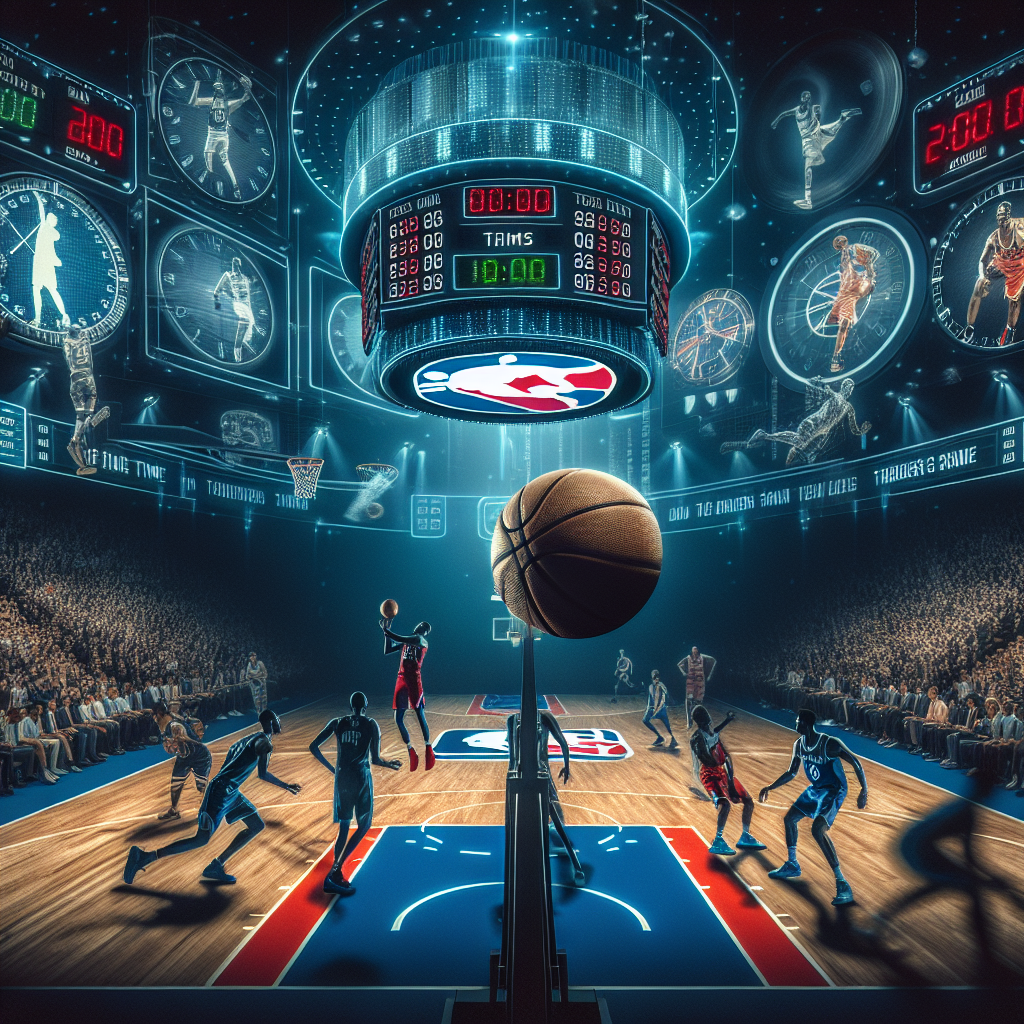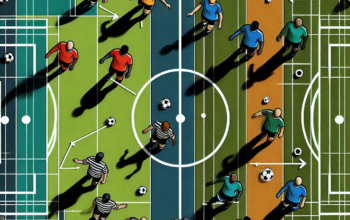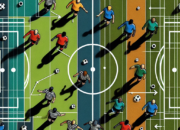The NBA Trade Deadline is one of the most anticipated events in the basketball calendar, creating buzz among teams and players alike. As we approach the 2025 edition of this pivotal moment in the season, fans and analysts are eagerly waiting to see how franchise fortunes will shift. With the competitive landscape of the league constantly evolving, teams must balance the desire for immediate success against future aspirations. This article delves deep into the NBA Trade Deadline, offering insights into expected trades, team strategies, and potential implications for the remainder of the season.
Understanding the NBA Trade Deadline: Importance and Impact
The NBA Trade Deadline typically falls in February and marks the last opportunity for teams to make trades before the playoffs begin. This period is crucial for franchises aiming to strengthen their rosters and explore new strategies for upcoming playoff runs. During this time, teams reassess their current lineups, considering players that can fill gaps and elevate their chances for championship contention. In the 2025 season, the stakes are higher than ever, with several teams hovering precariously around playoff spots and others looking to offload contracts as they prepare for a rebuild.
The impact of the Trade Deadline extends beyond a simple transaction; it shapes team dynamics, influences fan engagement, and transforms the competitive balance of the league. Historically, teams that make savvy trades during this period often find themselves deep in playoff contention or in a better position for future seasons. For the 2025 season, maintaining a balanced team that can adapt quickly to in-season changes will be critical for franchises aiming to make a deep playoff push.
Key Players on the Trade Block for 2025
As the 2025 Trade Deadline approaches, several high-profile players are rumored to be on the trading block. Notable names such as Zach LaVine of the Chicago Bulls and Karl-Anthony Towns of the Minnesota Timberwolves have emerged as potential trade candidates. LaVine, known for his scoring ability and explosive athleticism, has consistently been linked to contenders that are looking to strengthen their offensive firepower for the playoff push. Meanwhile, Towns, with his unique skill set as a big man who can shoot from long range, has garnered interest from teams seeking a franchise player to build around.
Beyond these star players, role players and emerging talents may also draw interest. Teams looking for immediate contributors without the hefty price tag of superstars will keep their eyes on players like Matisse Thybulle of the Portland Trail Blazers or Malik Beasley of the Utah Jazz. Their potential marketability lies in their ability to provide depth and versatility, which can be incredibly valuable whether in a championship run or a rebuilding phase.
Strategies Teams Might Employ During the Trade Deadline
As teams approach the 2025 Trade Deadline, various strategies come to the forefront depending on their individual circumstances. Contenders are likely to pursue win-now moves, which mean trading for players who can make an immediate impact. For instance, teams like the Golden State Warriors and Milwaukee Bucks could look to fortify their benches with veteran presence that provides depth in case of injuries or fatigue during the grueling playoff run. Such trades can include giving away younger players or future draft picks that may not be needed in the short term.
On the flip side, teams that find themselves out of playoff contention, like the Detroit Pistons or Orlando Magic, may opt for a long-term strategy focused on rebuilding. This could mean trading away high-salary players in exchange for draft picks and young prospects. These franchises are more inclined to view the Trade Deadline as an opportunity to reshuffle their rosters to better position themselves for future success. The 2025 season is likely to see significant movement as teams aim to set the foundation for not only this season but the years to come.
The psychological aspect of trading also plays a crucial role. Management must consider not just player talents but how changes affect team chemistry and morale. Newly acquired players need time to adjust, and managing expectations can become a delicate balancing act. Teams hoping to make impactful changes will have to analyze every angle, ensuring that the trades they make align not only with their strategy but also with team dynamics.
Potential Trade Scenarios to Watch
As we look ahead to the 2025 Trade Deadline, several intriguing trade scenarios are worth monitoring. One of the most debated possibilities is a potential blockbuster deal involving multiple teams. A deal that sends Zach LaVine to a contender in exchange for future assets and young talent could drastically reshape the landscape of the Eastern Conference. Similarly, Karl-Anthony Towns may attract attention from teams in desperate need of a high-impact center, such as the Miami Heat, which could lead to a multi-team trade involving significant assets and players on the move.
Another scenario to keep an eye on is the potential for teams to package two or more players together to attract larger contracts. Teams like the New Orleans Pelicans might consider this strategy to offload players who no longer fit their timeline while simultaneously bringing in a larger name that can lead them into a new competitive era. The ability for franchises to be creative with their trades often leads to unexpected outcomes, which heightens the excitement around the Trade Deadline.
Lastly, speculative trades involving players on expiring contracts can create opportunities for both short-term gains and long-term flexibility. Teams in a tight salary cap situation may look to bolster their rosters for a playoff push, using these expiring deals to avoid long-term commitments. Players like Serge Ibaka, who can contribute but might not fit long-term plans for several teams, could also be on the move, impacting the quality of the teams involved significantly.
Anticipated Effects of Trade Deadline Moves on the Playoffs
The ramifications of trades made around the NBA Trade Deadline can be monumental, affecting everything from team chemistry to playoff seeding. A team that successfully bolsters its roster might see a surge in performance, propelling them into the upper echelon of playoff contenders. For instance, if a team like the Dallas Mavericks were to trade for a high-scoring forward, it would not just elevate their offensive capabilities but could also hint at their strategic intentions during the playoffs.
Conversely, teams that make ill-considered trades or fail to improve their standing may find themselves at a disadvantage during the playoffs. The NBA is incredibly competitive, and even slight fluctuations in team dynamics can lead to significant changes in outcomes. In the 2025 season, we may see teams that became too hesitant or overly aggressive in their trading strategies suffer as skilled teams like the Phoenix Suns and Boston Celtics take full advantage of their well-calibrated rosters.
Lastly, the impact of the Trade Deadline often extends beyond the regular season, influencing free agency conversations and future trades. Players often look closely at teams that have made bold trades, assessing where they might fit in for the upcoming season. A well-strategized deadline can enhance a team’s reputation league-wide, making it a more attractive destination for top-tier free agents in the summer.
Looking Ahead: How the Trade Deadline Shapes Future Seasons
The decisions made during the 2025 NBA Trade Deadline will carry implications well beyond this current season. Teams that successfully execute trades can position themselves as both short-term contenders and long-term players in the brutal landscape of the NBA. By bringing in young talent or optimizing their rosters, organizations can set themselves up for sustained success and potentially build championship-caliber teams for several years to come.
On the contrary, franchises that engage in panicked trades without proper foresight may find themselves trapped in a cycle of mediocrity. The pitfalls of short-sighted moves often include heavy financial burden due to poor contract management and loss of future assets. As the NBA evolves, teams must ensure they are not just thinking about immediate outcomes but are planning strategically for future player development and salary cap flexibility.
Moreover, the impact of the NBA Trade Deadline on fan engagement should not be overlooked. Fans eagerly anticipate trades, bringing renewed energy to franchises that might otherwise be struggling mid-season. Trade discussions can be a catalyst for renewed interest, helping to maintain attendance and viewership during critical points in the season. Those franchises that manage to engage their fan bases effectively will have a uniquely advantageous position as they move forward into future seasons.
Conclusion:
The NBA Trade Deadline in 2025 promises thrills, surprises, and shifts in the competitive landscape. With key players potentially on the move, strategies evolving, and significant ramifications for playoff aspirations, every team will be evaluated through the lens of these crucial trades. As franchises seek to balance current performance with future success, the decisions made during this time will inevitably shape the narrative for the remainder of the season and have lasting effects for years to come.
Playing the waiting game in hopes of an advantageous deal or taking the plunge with bold moves will test each team’s management and strategic vision. As we count down to the deadline, all eyes will be on the franchises, players, and fans—the excitement is palpable, and the wait will be well worth it.
FAQs
What is the NBA Trade Deadline?
The NBA Trade Deadline is the last day that teams can make trades during the regular season, typically held in February. After this date, teams cannot trade players until after the season ends.
When is the NBA Trade Deadline for the 2025 season?
The exact date for the 2025 NBA Trade Deadline will be announced by the league, but it usually falls in mid-February.
How do trades affect a team’s playoff chances?
Trades can significantly enhance a team’s capabilities by addressing weaknesses or adding depth, thus improving their chances of success in the playoffs.
Which teams are expected to be active during the 2025 Trade Deadline?
Teams like the Chicago Bulls, Minnesota Timberwolves, and several others vying for playoff positioning are expected to be active, either pursuing trades for star players or young prospects.
Are expiring contracts valuable in trade scenarios?
Yes, expiring contracts can be highly sought after due to their flexibility, allowing teams to make moves without being tied down long-term to a player’s salary.
How can I stay updated on NBA trades during the deadline?
To stay informed, check reliable sports news websites, follow NBA analysts on social media, and keep an eye on the NBA’s official website for real-time updates.






